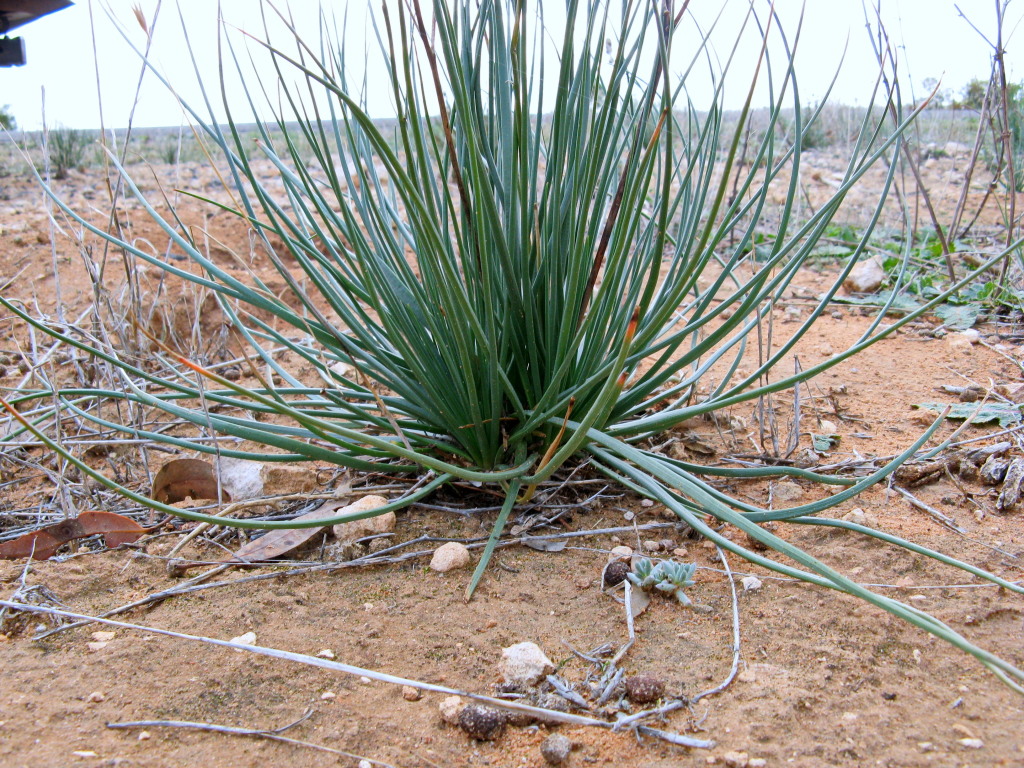Asphodelus fistulosus
L. Onion WeedTufted annuals or biennials to c. 70 cm high. Roots fibrous, bright yellow. Leaves erect, linear, terete or plano-convex in section, hollow, 5–40 cm long, 1.5–4 mm wide, minutely scabrous along margins, often somewhat glaucous. Inflorescence erect, paniculate; flowers each solitary in axil of a small papery bract, pedicel exceeding bract; perianth segments shortly fused at base, 7–12 mm long, pale pink with a reddish-brown central streak; stamens shorter than the perianth segments; filaments narrowed below the centre but then broadening and hairy around the ovary, narrowing abruptly immediately below the anther. Capsule globose c. 4–7 mm long; seeds 1 or 2 per locule, c. triangular 2–3 mm long, transversely wrinkled. Flowers Aug.–Oct.
LoM, MuM, Wim, GleP, Brid, VVP, VRiv, MSB, RobP, MuF, GipP, OtP, Gold, CVU, NIS, HSF. Naturalised in all States, widely introduced in temperate countries. Native to southern Europe, western Asia and northern India. Occurs on sandy soils, principally in cereal growing areas of the west and north-west where commonly infesting large areas to the exclusion of other vegetation. It is a declared noxious weed in Victoria, Tas. and SA.
Conran, J.G. (1994). Liliaceae. In: Walsh, N.G.; Entwisle, T.J., Flora of Victoria Vol. 2, Ferns and Allied Plants, Conifers and Monocotyledons, pp. 637–686. Inkata Press, Melbourne.
 Spinning
Spinning




